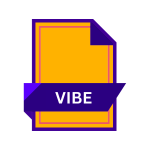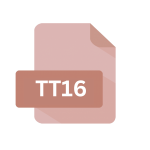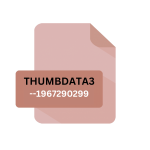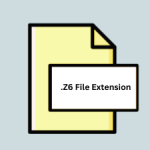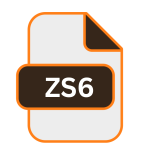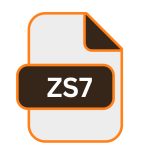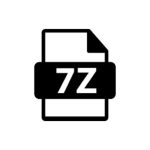.XBD File Extension

DocuWorks Binder File
| Developer | Xerox |
| Popularity | |
| Category | Data Files |
| Format | .XBD |
| Cross Platform | Update Soon |
What is an XBD file?
.XBD files belong to the DocuWorks Binder format, a proprietary file type developed by Fuji Xerox for their DocuWorks document management software.
These files serve as virtual binders, allowing users to compile multiple documents into a single, cohesive entity.
This consolidation facilitates efficient organization, storage, and sharing of related documents, streamlining workflows in both personal and professional settings.
More Information.
DocuWorks Binder files, represented by the .XBD extensions were introduced as part of the DocuWorks software suite in the early 2000s.
At that time, the proliferation of digital documents necessitated innovative solutions for efficient document management.
Recognizing this need, Fuji Xerox developed DocuWorks Binder files to offer users a comprehensive solution for organizing and presenting their digital documents in a structured manner.
The primary purpose of .XBD files were to provide users with a digital equivalent of physical binders, allowing them to compile and organize disparate documents into cohesive collections.
This capability proved invaluable in various contexts, including office administration, project management, academic research, and personal document organization.
By consolidating related documents within a single binder, users could streamline their workflows, enhance collaboration, and improve document accessibility.
Origin Of This File.
The genesis of the .XBD file extension can be traced back to the development of DocuWorks, a comprehensive document management solution introduced by Fuji Xerox.
To enhance document organization and accessibility, DocuWorks sought to provide users with a versatile tool for compiling, viewing, and managing digital documents.
The .XBD format emerged as a key component of this endeavor, enabling users to create virtual binders that mimic the structure and functionality of traditional paper-based binders.
File Structure Technical Specification.
.XBD files are structured to mimic the format of physical binders, comprising multiple sections, sub-sections, and individual documents.
The hierarchical structure of .XBD files allow users to organize their content logically and hierarchically, facilitating easy navigation and retrieval.
Technically, .XBD files are container formats that can encapsulate various types of digital documents, including text files, images, PDFs, spreadsheets, and presentations.
This versatility enables users to compile diverse content types within a single binder, eliminating the need for disparate file formats and applications.
Internally, .XBD files may utilize a proprietary data format optimized for efficient storage and retrieval within the DocuWorks environment.
While the specifics of this format are proprietary to Fuji Xerox, it likely involves mechanisms for indexing, compression, and metadata management to enhance performance and usability.
How to Convert the File?
Converting .XBD files to other formats may be necessary to enhance compatibility or share documents with users who do not have access to DocuWorks software.
While direct conversion tools for .XBD files are limited, the following methods can be employed:
- Export as PDF: DocuWorks allows users to export .XBD files as PDF documents, preserving the content and formatting for universal accessibility.
- Print to PDF: Users can print .XBD files using DocuWorks’ virtual printer and save them as PDF files, replicating the original layout and structure.
- Document Conversion Software: Third-party document conversion software may support .XBD file conversion to formats such as PDF, DOCX, or TIFF, albeit with potential formatting adjustments.
Advantages And Disadvantages.
Advantages:
- Organizational Efficiency: .XBD files enable users to consolidate and organize disparate documents into cohesive collections, facilitating efficient document management.
- Collaboration: By sharing .XBD files, users can collaborate on projects, share information, and maintain document consistency across teams and organizations.
- Presentation: .XBD files can be used to create structured presentations, allowing users to present information in a hierarchical and organized manner.
- Version Control: DocuWorks Binder files may offer version control features, enabling users to track changes, revisions, and updates to documents within a binder.
Disadvantages:
- Proprietary Format: .XBD files are proprietary to Fuji Xerox and may require specific software (DocuWorks) for viewing and editing, limiting interoperability with other applications.
- Compatibility: Due to their proprietary nature, .XBD files may not be fully compatible with third-party software and platforms, potentially limiting their usability in certain environments.
- Dependency on DocuWorks: Users reliant on .XBD files are dependent on the continued availability and support of DocuWorks software, which may pose risks in the event of software obsolescence or discontinuation.
How to Open XBD?
Open In Windows
- Install DocuWorks Viewer Light, a free viewer application for Windows, to open .XBD files.
- Alternatively, utilize third-party software compatible with .XBD files, if available.
Open In Linux
- DocuWorks software may not be readily available for Linux distributions. Users can explore virtualization or emulation options to run Windows-based applications for .XBD file access.
- Consider using online conversion services to convert .XBD files to universally compatible formats.
Open In MAC
- Use DocuWorks Viewer Light for Mac to view .XBD files on macOS.
- Explore third-party applications that support .XBD files or consider converting them to a compatible format.

